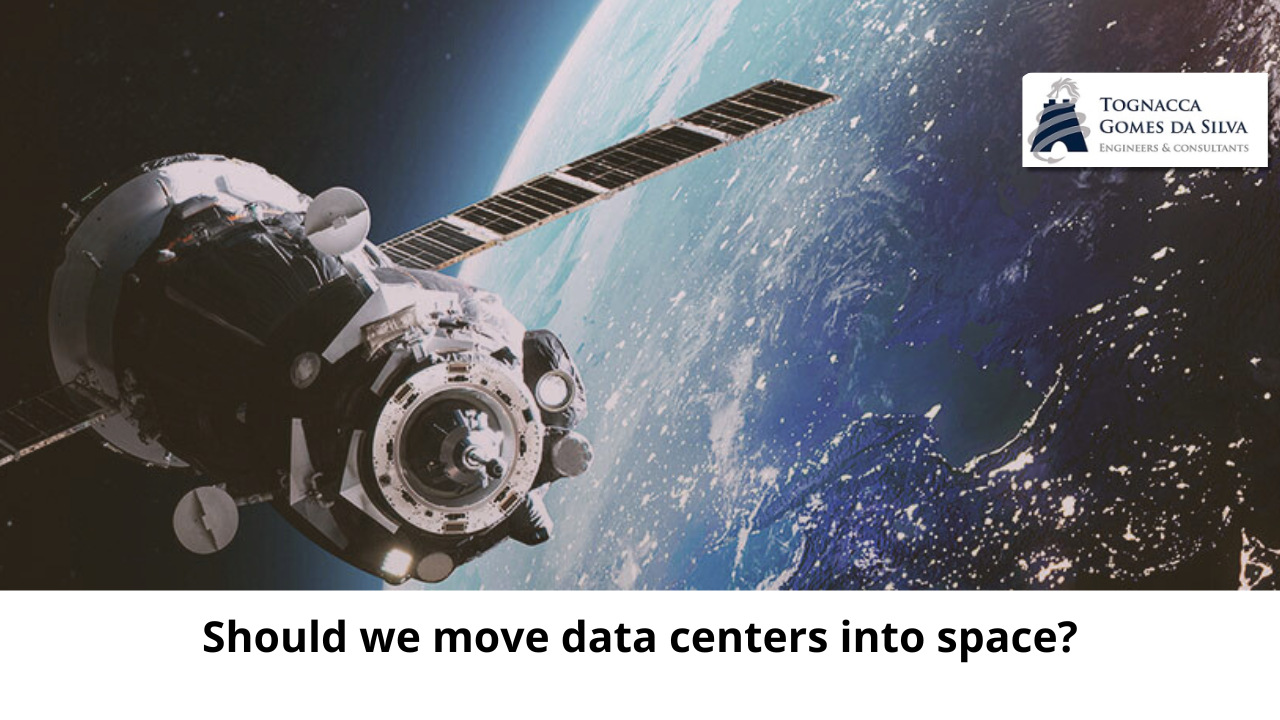In February of this year, Florida-based Lonestar Data Holdings launched a shoebox-sized device containing data from internet pioneer Vint Cerf and the Florida government, among others, aboard Intuitive Machines’ Athena lander. Landing the device on the moon makes the company a pioneer in explicitly testing a question that has puzzled some technologists recently: Is it time to move data centers off Earth?
After all, energy-hungry data centers are mushrooming around the world, taking up valuable land, straining power grids, consuming water, and emitting noise. Building such facilities in orbit or on the moon could help mitigate many of these issues.
For Steve Eisele, Lonestar’s president and chief revenue officer, one of the main attractions of storing data on the moon is security. “Ultimately, the moon may be the safest option for backing up your data,” Eisele says. “It’s harder to hack, much harder to break into, and it’s above any problem on Earth, from natural disasters to blackouts to wars.”
Lonestar’s device has a storage capacity of eight terabytes, equivalent to a high-performance laptop. It will only operate for a few weeks before the arrival of lunar night, when temperatures plummet and solar energy runs out. But the company hopes that this period will be enough to test practical aspects such as downloading and uploading data and verifying secure transfer protocols.
And it has even bigger plans. As early as 2027, the company plans to launch a commercial data storage service using a constellation of satellites positioned at the L1 Lagrange point between the Earth and the Moon, a gravitationally stable region 61,350 kilometers above the lunar surface. From this position, spacecraft would have a constant view of Earth, allowing continuous access to data.
Other companies share similar ambitions. Axiom Space, the US company best known for organizing private trips to the International Space Station, plans to launch a prototype server to the station in the coming months. By 2027, the company wants to establish a computing node in low-Earth orbit inside its own space station module.
Washington state-based Starcloud is betting on the need to process data in space. The company, which raised $11 million in December and has raised more funding since then, plans to launch a small satellite equipped with Nvidia GPUs later this year to perform data processing in space.
Axiom sees an urgent need for computing power in space that goes beyond creating secure backups for Earth-based data. Today’s growing fleets of Earth-observing and space-based satellites face bandwidth constraints. Before users can gain insights from satellite imagery, that data must be transmitted to ground stations around the world and then sent to data centers for processing, which creates delays.
“Data centers in space will help accelerate many use cases,” says Jason Aspiotis, Axiom’s global director of data and space security. “The time between observing something and taking action is critical for national security and some scientific applications. A computer in space would also reduce the costs involved in transmitting all that data back to Earth.”
But for these data centers to succeed, they need to be able to withstand the extreme conditions of space, capture enough solar energy to operate, and make economic sense. Enthusiasts say the challenges are more manageable than they might seem—especially considering some of the problems with data centers on Earth.
Better in space?
The current boom in AI and cryptocurrency mining is raising concerns about the environmental impact of computing infrastructure on Earth. Currently, data centers consume about 1% to 2% of the world’s electricity. That number could double by 2030, according to a Goldman Sachs report published last year.
Space technology enthusiasts believe that orbiting data centers could solve this problem.
“Data centers on Earth require a lot of energy to operate, which means they have a high carbon footprint,” says Damien Dumestier, a space systems architect at European aerospace conglomerate Thales Alenia Space. “They also generate a lot of heat, so water is needed to cool them. None of this is a problem in space, where there is unlimited access to solar energy and where excess heat can simply be radiated into the vacuum.”
Dumestier, who led a European Union-funded study into the feasibility of placing large-scale IT infrastructure in Earth orbit, also sees space as a safer option than Earth for transporting and storing data. Undersea fiber-optic cables are vulnerable to sabotage and natural disasters, such as the underwater volcanic eruption that left Tonga without internet for two weeks.
At high altitudes, data centers connected by tamper-proof laser links would be much harder to hack or break into. Barring anti-satellite missiles, nuclear explosions in space or interceptor robots, these super-computing hubs would be virtually untouchable. Or rather, almost untouchable — micrometeorites and space debris pose risks, but they can be avoided, and to some extent, equipment can be designed to withstand such impacts.
Outside of Earth’s protective atmosphere, electronics would also be exposed to energetic particles from the Sun, which could damage them over time. Axiom aims to address this problem by using ruggedized military equipment, which Aspiotis says has proven to be highly resilient in extreme environments. Lonestar, meanwhile, believes it could avoid the intense radiation near the Moon by placing its data centers inside lava tubes beneath the lunar surface.
The question of powering these facilities remains. While solar energy in Earth orbit is free and constantly available, it has never been collected in sufficient quantities to power data infrastructures on the scale that exist on Earth.
The Thales Alenia Space study, called ASCEND (Advanced Space Cloud for European Net Zero Emission and Data Sovereignty), envisions data platforms in orbit twice the size of the International Space Station, the largest space structure ever built. The server racks at the center of the ASCEND platforms would be powered by vast solar panels capable of generating a megawatt of power, equivalent to the electrical consumption of about 500 Western homes. By comparison, the ISS’s solar panels produce only a quarter of that amount — about 240 kilowatts at full light.
Launch costs—and the environmental impact of rocket launches—also complicate the picture. For space data centers to be an environmental win, Dumestier argues that the carbon footprint of rocket flights needs to improve. He points out that SpaceX’s Starship, designed to carry very large payloads and therefore be cheaper and more efficient per kilogram launched, represents a big step in the right direction—and could pave the way for large-scale orbital data centers by 2030.
Aspiotis shares this view: “In the not-too-distant future, data centers in space will be as cost-effective as those on Earth,” he says. “In that case, do we want to keep them on the Earth’s surface, where they consume energy, water, and other resources, and take up valuable land?”
However, Domenico Vicinanza, associate professor of intelligent systems and data science at Anglia Ruskin University in the United Kingdom, is more skeptical. He argues that moving data centers to space on a large scale is still a highly ambitious project. Robotic technologies capable of assembling and maintaining these gigantic structures do not yet exist, and hardware failures in the harsh environment of orbit would increase maintenance costs.
“Fixing problems in orbit is far from simple. Even with robotics and automation, there are limits to what can be repaired remotely,” Vicinanza explains. “While space offers the benefit of uninterrupted solar power, solar flares and cosmic radiation can damage sensitive electronics. Today, everything from conventional microchips to memory is not designed or tested to work in space.”
He also warns of the risk of collisions, which could further increase the amount of space debris around Earth. “Any accidental damage to a data center could trigger a chain reaction of debris, further complicating orbital operations,” he says. But even if data centers are not moved from Earth, advocates argue that this is a critical technology for expanding our presence in space.
“The lunar economy will grow, and within the next five years we will need digital infrastructure on the Moon,” Eisele said. “We will have robots that will need to communicate with each other. Governments will establish scientific bases and will need digital infrastructure for their operations, both on the Moon and for future missions to Mars and beyond. This will be a fundamental part of our future.”
(fontes: MIT Technology Review)



